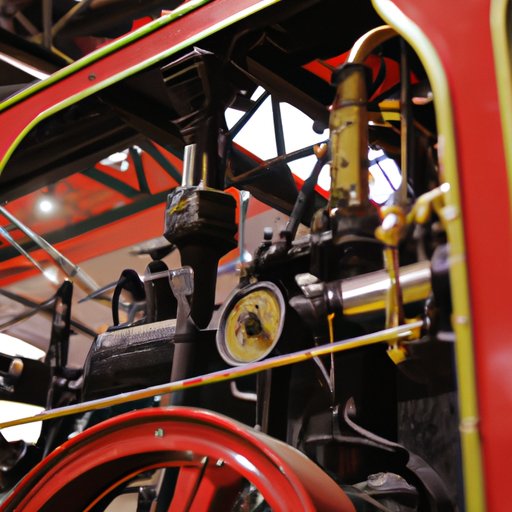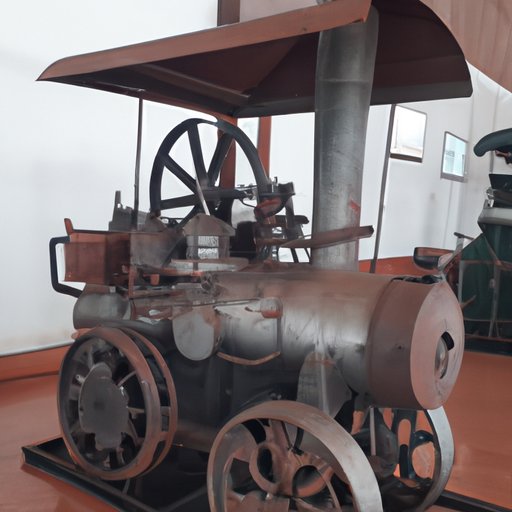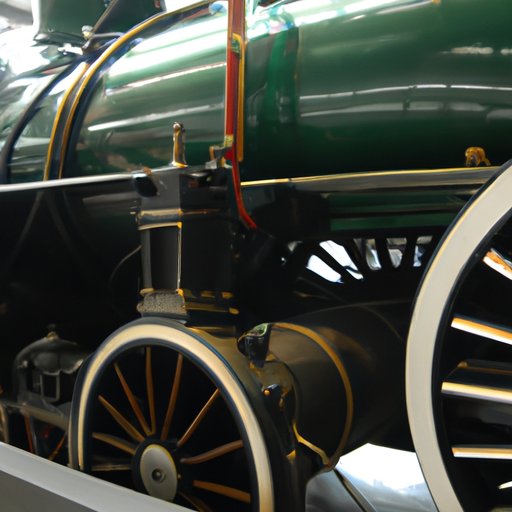Introduction
The steam engine is an invention that has changed the course of history. It is a device that uses the power of steam to generate mechanical motion. Steam engines have been used in a variety of industries, from powering locomotives to powering factories and ships. But when was the steam engine invented? This article will explore the history of the steam engine, its development over time, and the implications it had for society.
A Historical Look at the Invention of the Steam Engine
The first experiments with steam power can be traced back to ancient Greece and Rome. These early experiments were limited in scope and did not result in any practical applications. The first successful steam engine was developed by Thomas Savery in 1698. Savery’s invention was a type of pump that used steam to raise water. However, it was not until 1712 that the first practical application of the steam engine was developed. In that year, Thomas Newcomen developed the atmospheric steam engine, which was used to pump water out of coal mines.
In 1769, James Watt made several improvements to the steam engine, including the use of a separate condenser. This allowed the engine to operate more efficiently and increased its power output. Watt’s improvements revolutionized the steam engine and paved the way for its widespread use in industry. The industrial revolution was driven largely by the invention of the steam engine and its ability to power large machines.

The Early Days of Steam Power
The invention of the steam engine had a profound impact on industry. Factories were able to produce goods at a much faster rate, and the cost of production decreased significantly. The steam engine also revolutionized transportation. Trains powered by steam engines could travel much faster than horse-drawn carriages, and this enabled people to travel further and faster than ever before.
The steam engine also revolutionized shipbuilding. Ships powered by steam engines could travel greater distances and move heavier loads than those powered by sails. This enabled countries to expand their trade networks and become more competitive in the global market.

Exploring the Impact of the Steam Engine on Society
The invention of the steam engine had a significant impact on society. It enabled countries to increase their production of goods and services, which led to economic growth. This, in turn, created new jobs and improved living standards for many people. The steam engine also enabled people to travel further and faster than ever before, which opened up new opportunities for exploration and discovery.
The invention of the steam engine also had some negative implications. Pollution from burning coal to power the steam engines caused environmental damage. This pollution also contributed to health problems, such as respiratory illnesses. In addition, the introduction of mechanized labor led to job losses for many people.

A Timeline of the Development of the Steam Engine
The development of the steam engine can be broken down into several key milestones. In 1698, Thomas Savery developed the first successful steam engine. In 1712, Thomas Newcomen developed the atmospheric steam engine. In 1769, James Watt made several improvements to the steam engine, increasing its efficiency and power output. Finally, in 1807, Robert Fulton developed the first commercial steamboat.
Throughout the development of the steam engine, there were several pioneers who played an important role in its invention. Thomas Savery, Thomas Newcomen, and James Watt are widely credited as the inventors of the steam engine. Robert Fulton is credited with developing the first commercially successful steamboat. Other notable figures include George Stephenson, who developed the first steam locomotive, and Isambard Kingdom Brunel, who designed some of the world’s most impressive steamships.
Conclusion
The invention of the steam engine is one of the most important inventions in human history. It enabled countries to increase their production of goods and services, revolutionized transportation, and changed the way people lived. Although the steam engine had some negative implications, such as pollution and job losses, its impact on society has been overwhelmingly positive. The pioneers behind the invention of the steam engine have left a lasting legacy that continues to shape modern society.
(Note: Is this article not meeting your expectations? Do you have knowledge or insights to share? Unlock new opportunities and expand your reach by joining our authors team. Click Registration to join us and share your expertise with our readers.)
